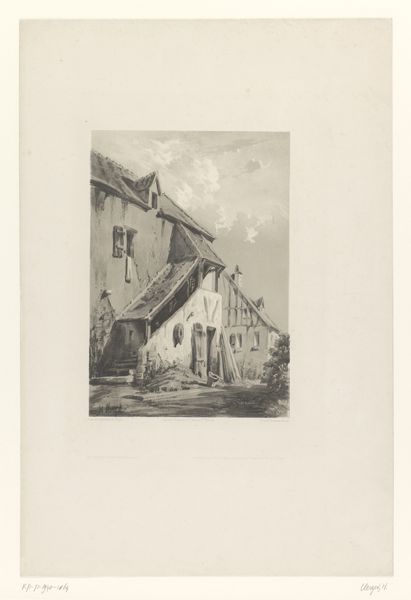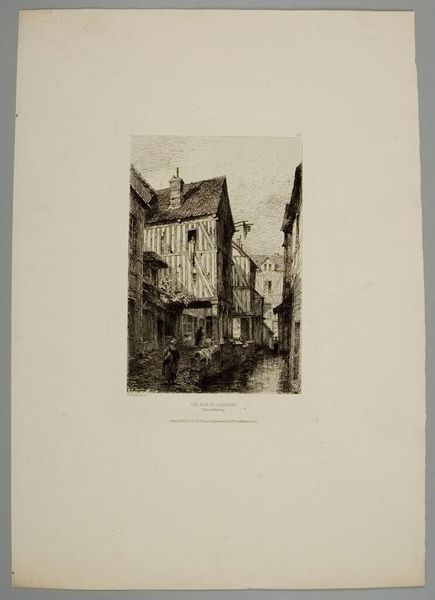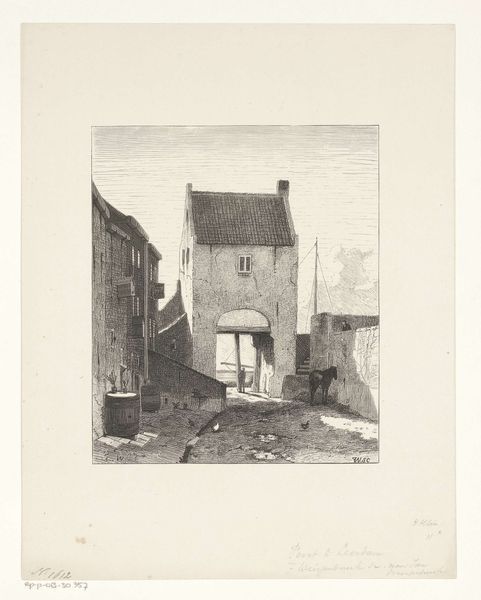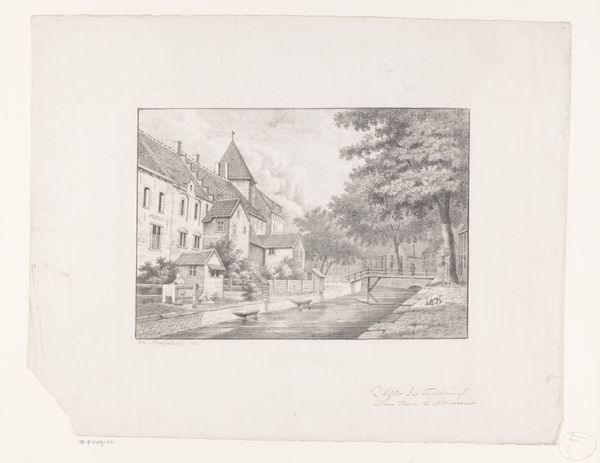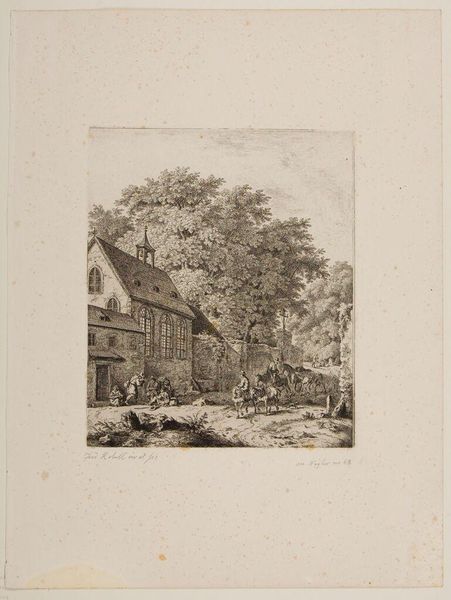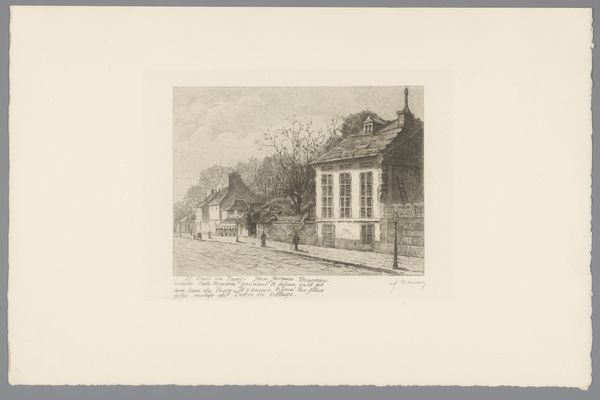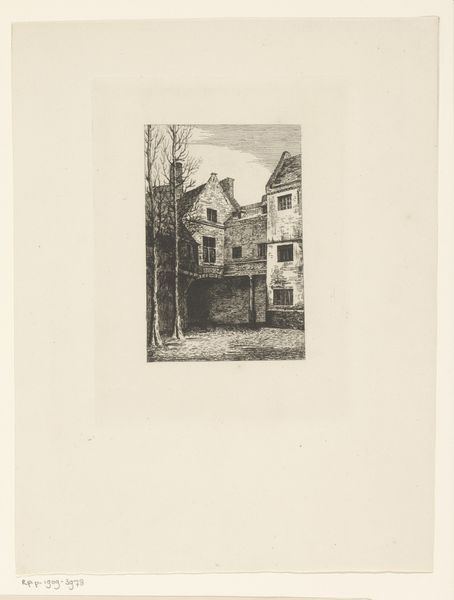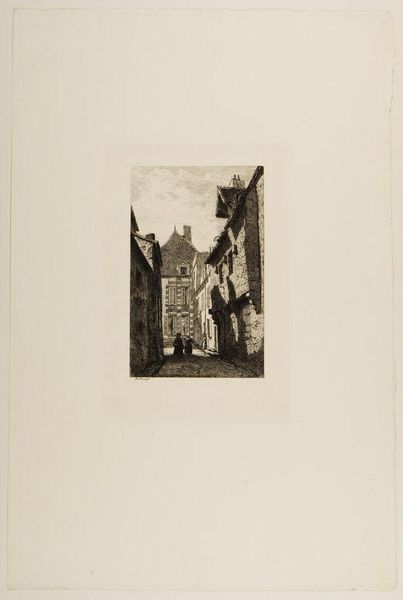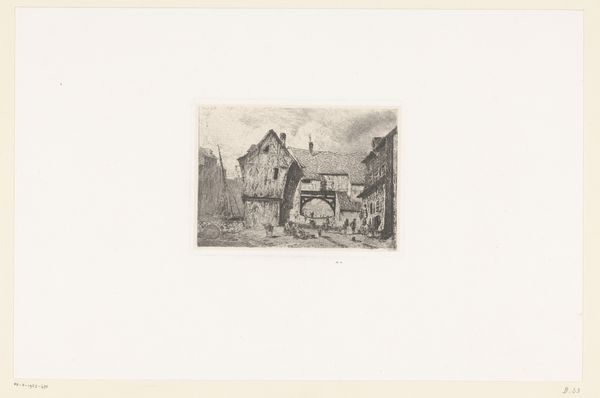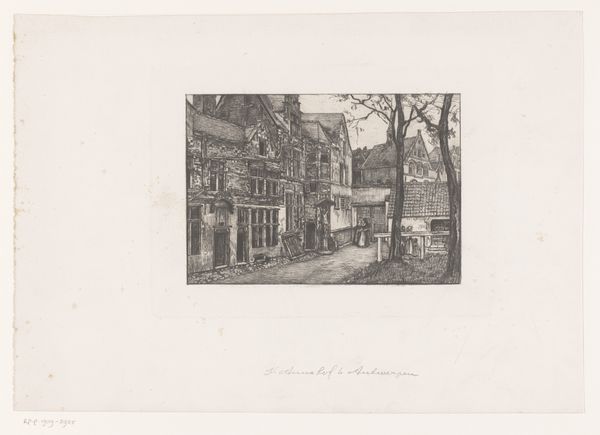
print, etching
#
dutch-golden-age
# print
#
etching
#
landscape
#
cityscape
#
genre-painting
#
realism
#
building
Dimensions: height 502 mm, width 333 mm
Copyright: Rijks Museum: Open Domain
Curator: Looking at this scene, my first impression is this feels like peering into a bygone era, almost as if glimpsing a sepia-toned memory. I think it has a gentle melancholy about it. Editor: This etching, "De kaasmarkt te Edam," roughly translated as "The Cheese Market in Edam," is attributed to Emil Ost. Although the exact date is debated, it was likely produced sometime between 1856 and 1904. What stands out is that Emil Ost was keen on capturing these slices of everyday life. Curator: "Slice" is absolutely the word, pun intended perhaps? It’s this specific locale captured so distinctly; I find myself wondering about the stories embedded within the scene—who are those figures, what transactions are underway? Is this street still like this? Editor: Well, notice the building in the foreground – the detailing there tells us of mercantile might, echoing an era when Edam cheese reigned supreme. Observe how the lines converge and how buildings and human figures intertwine so smoothly; this suggests perhaps the societal harmony and mercantile spirit from that time. It all makes the artwork, technically, realism, but almost imbued with idealic notions. Curator: Harmony and capitalism coexisting? A tempting notion, even with a question mark after it, haha. Still, looking at it technically, the printmaker's ability to generate such a vibrant scene through the stark constraints of etching remains truly fascinating to me. This simple cheese market encapsulates far more than commercial exchanges. Look closely, for instance, you can even see a little dog! The way buildings line up too creates linear time that tells us to value every simple exchange of people and cultures. It's quite ingenious when you consider that people and social exchanges can have long impacts on the history of commerce. Editor: A fascinating point! Maybe these cheeses hold even deeper cultural currency. Curator: Absolutely, like many scenes from the Dutch Golden Age, it underscores a rising mercantile spirit, one we now almost romanticize due to our distance from it. That spirit really captured by such simple scene that reveals to be the embodiment of its period through visual symbolism and historical echoes. It allows a glimpse not only of what cheese transactions happened that day but also into the cultural memory contained in such scenes. Editor: True! A unassuming piece, yet teeming with historical and cultural resonance. Thanks for guiding us through it!
Comments
No comments
Be the first to comment and join the conversation on the ultimate creative platform.
